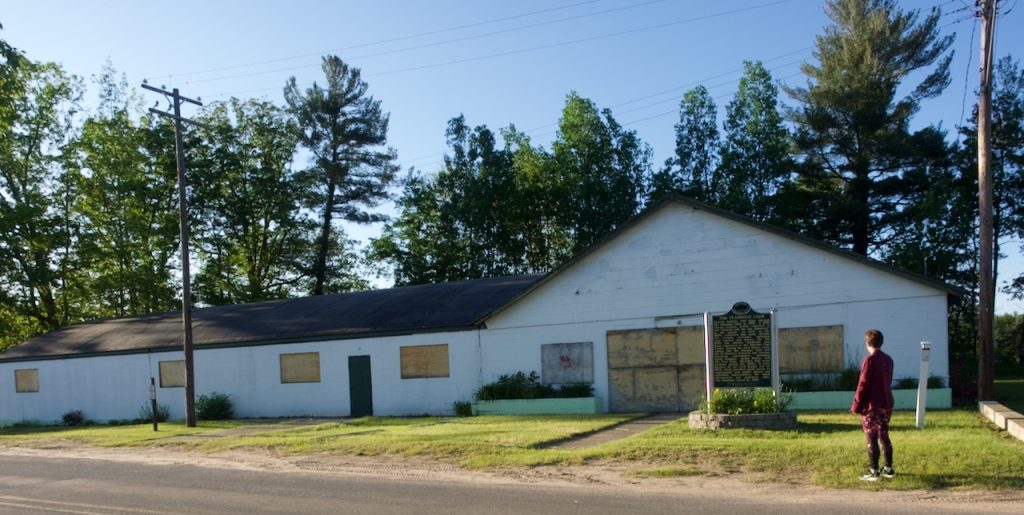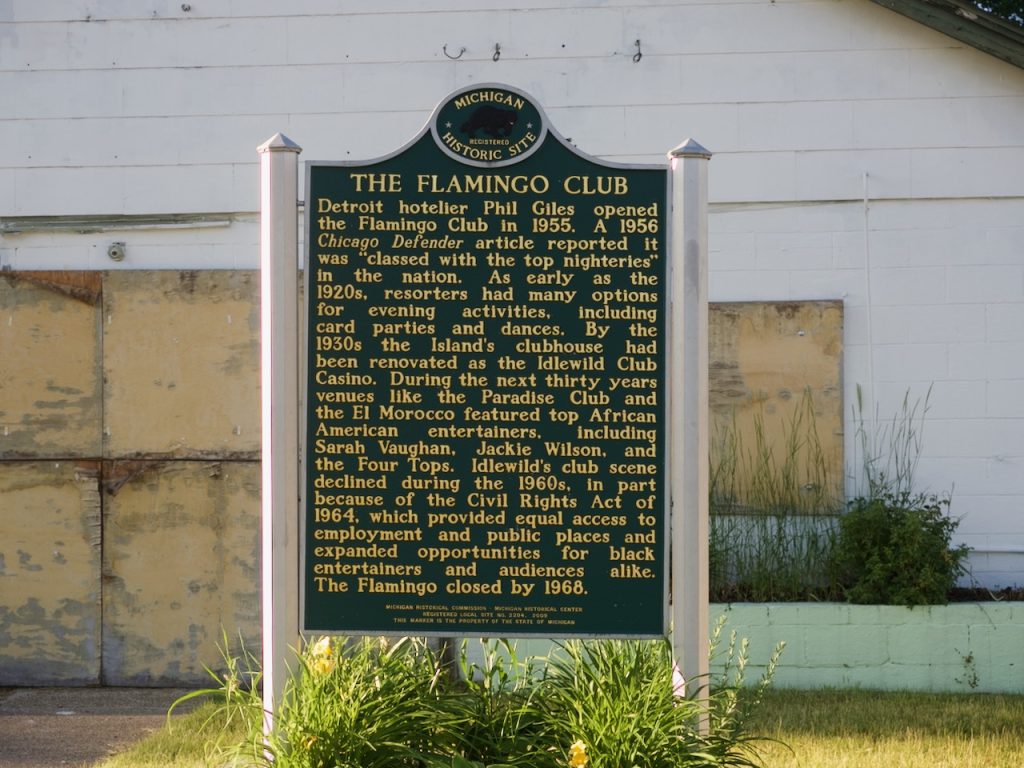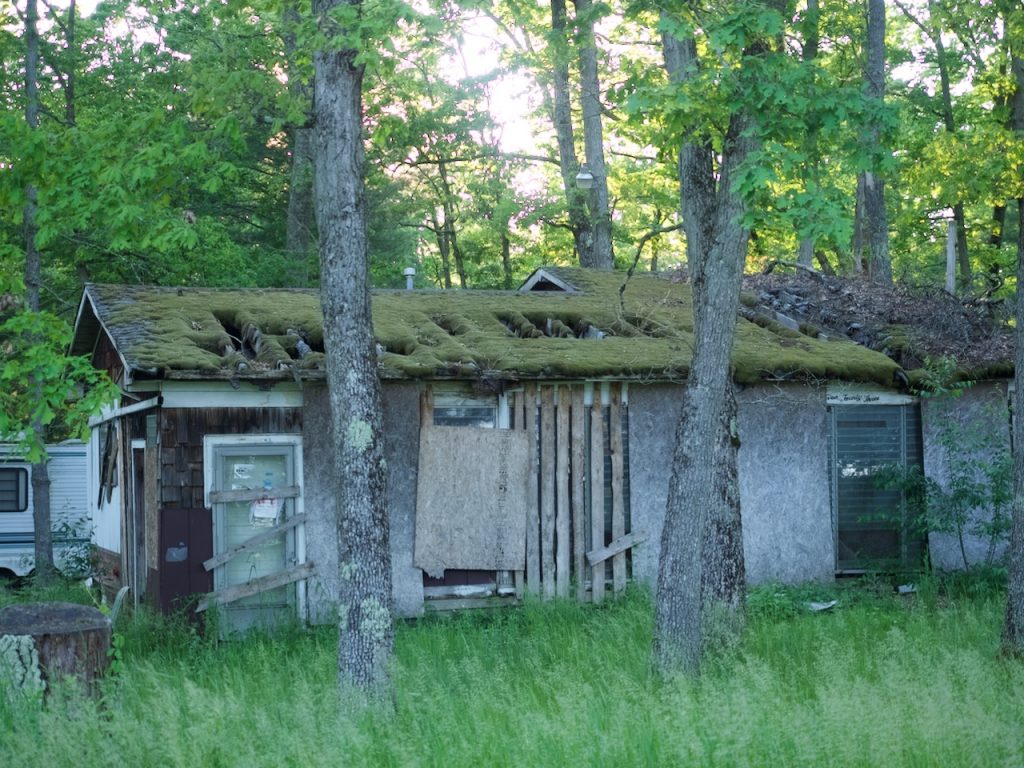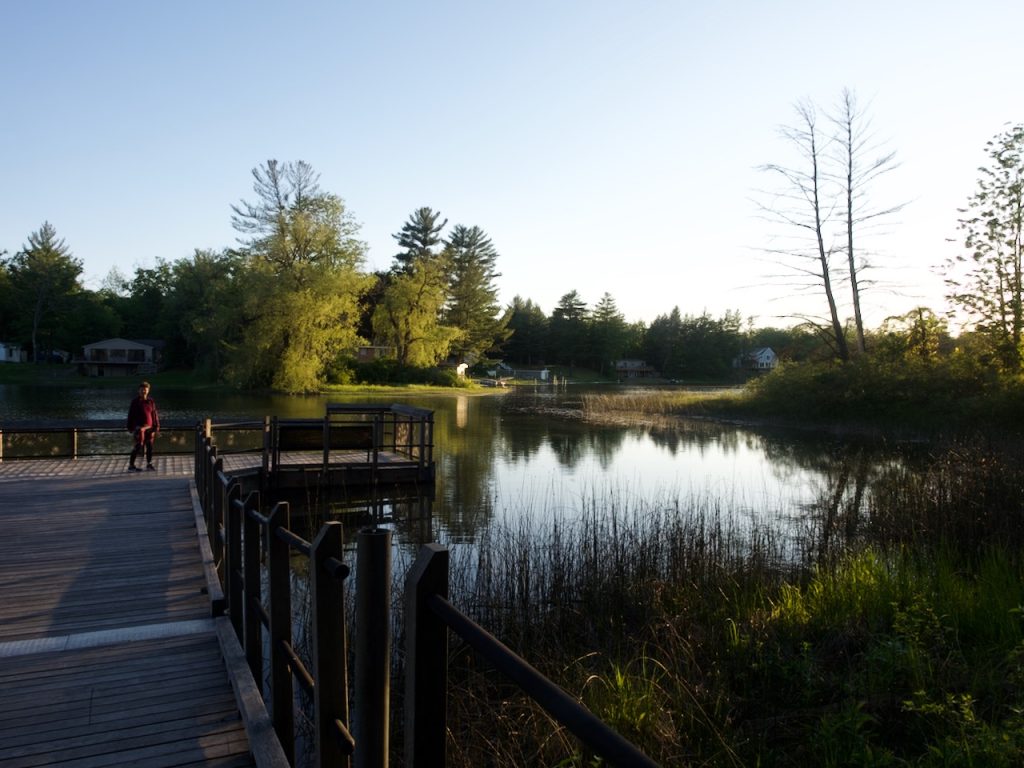
Today started with a farewell run (by me only) to the river and back along the de Quindre Cut. By 9 or so, we left beautiful Lafayette Park behind (point A on the map) and stopped briefly with some friends from Hastings that now live in the Detroit suburbs toward the northwest (point B). That was right on our path, so we sat on their deck for a little bit and caught up–we hadn’t seen each other in almost four years! We then headed West toward the Lake Michigan shore, stopped for a picnic lunch at an impeccably kept rest stop, and drove to one of the little lakeshore towns, Muskegon (C on the map), just to get a little walk in near the lake. The spot we picked had nice trails around two smaller lakes, but even though it looked like we’d be near the short of Lake Michigan, we could only see it from a distance between residences. We did, however, see wild turkeys and some very peaceful deer!
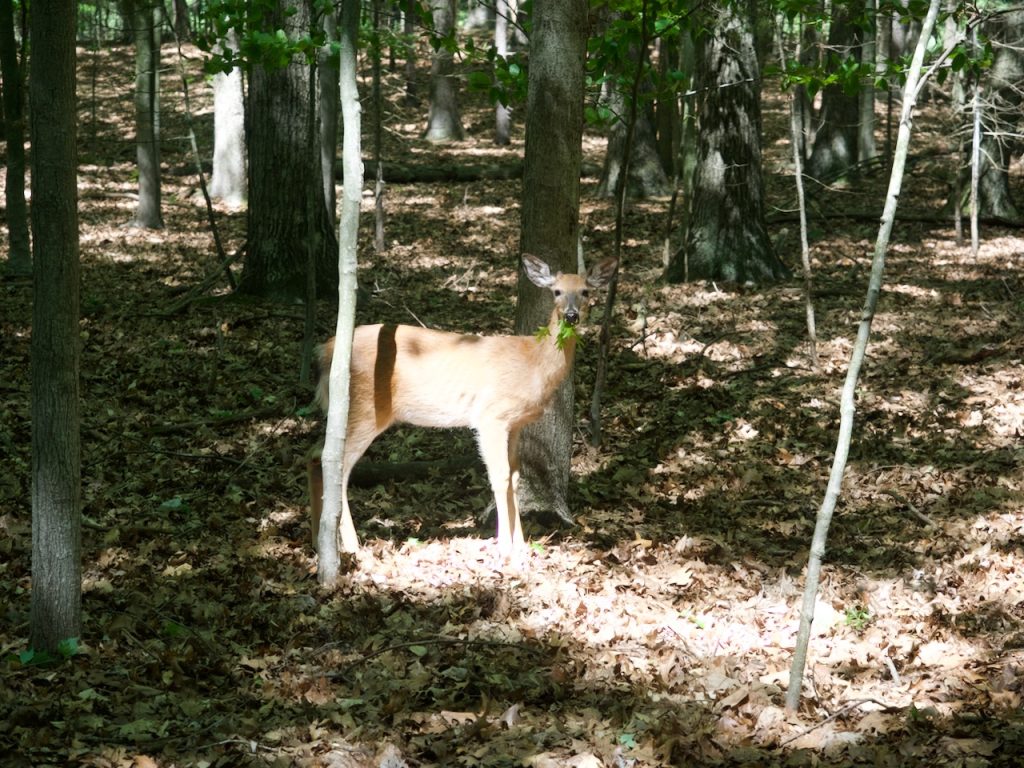
Then we drove to the main destination for the day, another 2 hours further north: Idlewild, an area that was at one time a wildly popular Black resort area. A group of white entrepreneurs who had purchased thousands of acres of land and platted it began to sell very small lots to interested Black vacationers in the 1910s. By the 1920s, a number homes, several hotels, bars, and clubs, and a number of simpler cabins had sprung up and Idlewild was THE place to spend the summer for middle- and upper-class Blacks from the midwestern cities–Chicago, Detroit, Cleveland, etc. who arrived by train and also by car. (It was still very popular in the 1940s and 1950s when increasing numbers of less affluent weekend visitors also came, now almost all by car; that’s the era when major musicians came to play and several more clubs were opened.) And even though the place fell on hard times after desegregation, and many homes and lots have fallen into disrepair, it is being revitalized (it has received National Historic District status and several buildings are on the National Historic Buildings register), and a number of Idlewild groups and members of the year-round community that began with summer guests three generations ago are putting a lot of effort into getting things going again. I’ll say more about the amazing people who gave us a tour the next day, Colleen and Chris, but they have both known Idlewild all their lives–she is in her 70s and he is in his 40s–and they understandably think it’s a bit ridiculous that the community they live in is mentioned as a “ghost town” in some publications.
This all would be interesting to me regardless of any Chesnutt connection, but I came because there is one: Chesnutt and his family started to come here for the summers (1-2 months every year) in 1921, in 1924 bought their own plot of land (a small one, eight 25 x 100 feet lots pieced together into one 20,000 squ feet or under 2000 squ meters, directly on lake Idlewild), and built a summer house in 1925-1926. When I found out that the house is still there, and that a neighbor bought the house from the last Chesnutt heir, his grandson John (“Johnnie”) Slade, in the early 2000s, I got in touch with her and asked whether I could come for a visit and a tour. And she offered to let us stay overnight in the Chesnutt house!
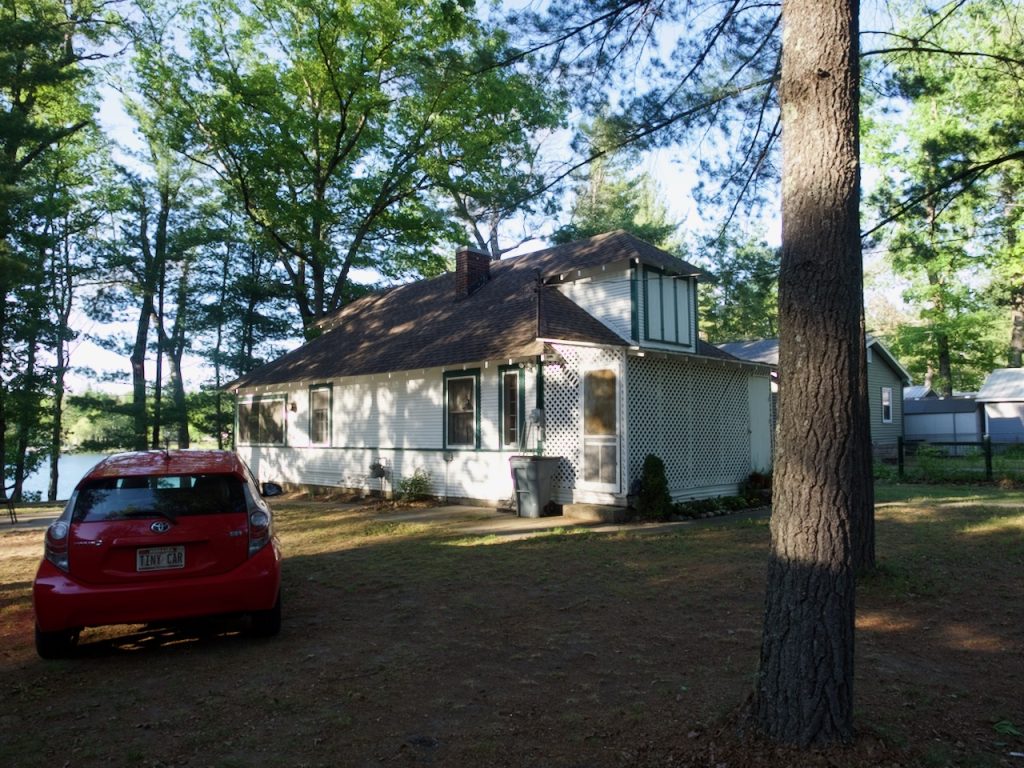
So we came into town around 6 pm (having had another picnic meal in the nearby teeny county seat of Baldwin), and Colleen and her husband Mike greeted us and showed us around. They have changed very little in the house, and use it mostly for family and friends while also protecting its history. Much in the house belonged to Chesnutt’s daughters Helen and Dorothy, who continued to summer there after his death in 1932, but a few things are original, and room arrangement has not changed at all. There are two tiny bedrooms, plus an attic room with windows on both ends for a cross-breeze (currently off limits) and a big living room with a fireplace, plus kitchen and bathroom with a claw-foot bathtub. There is a lovely, large screen porch with two porch swings and direct access to the lake within a few feet (the stairs that led down to the shore it are long gone, though), and everything just has that wonderful simple feel of a summer house. Chesnutt talks in a number of letters about the fishing he did here, as well as the dancing at the local establishments that were open in the 1920s and early 1930s.
Colleen and I chatted for a bit and Mark and I then walked once around the lake (3.7 miles!), stopping at the little beach across on Williams Island (no longer a real island, but connected by road where there were once footbridges). This is where the development started with some (now mostly defunct or vanished) stores, bars, a club house, and a hotel. We studied several historical markers, and stopped at a little park with a deck at the other end of the lake. The walk was lovely, as was just looking around at both brand new, well-maintained older and also some long-abandoned homes all around the lake. It was a fascinating way to get a first impression. We were home around 9:30 (it stays light very long here, at the Western edge of the time zone!) and then went to sleep IN CHESNUTT’S HOUSE.
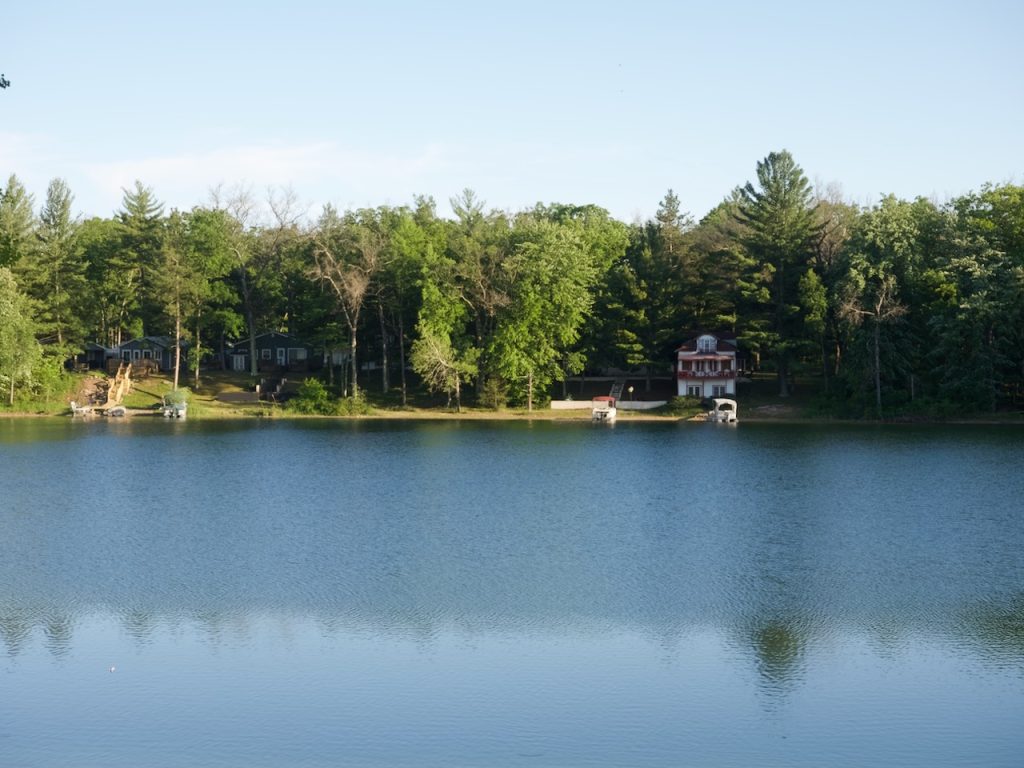
(the Chesnutt house is behind the trees to the right of the most visible house)
